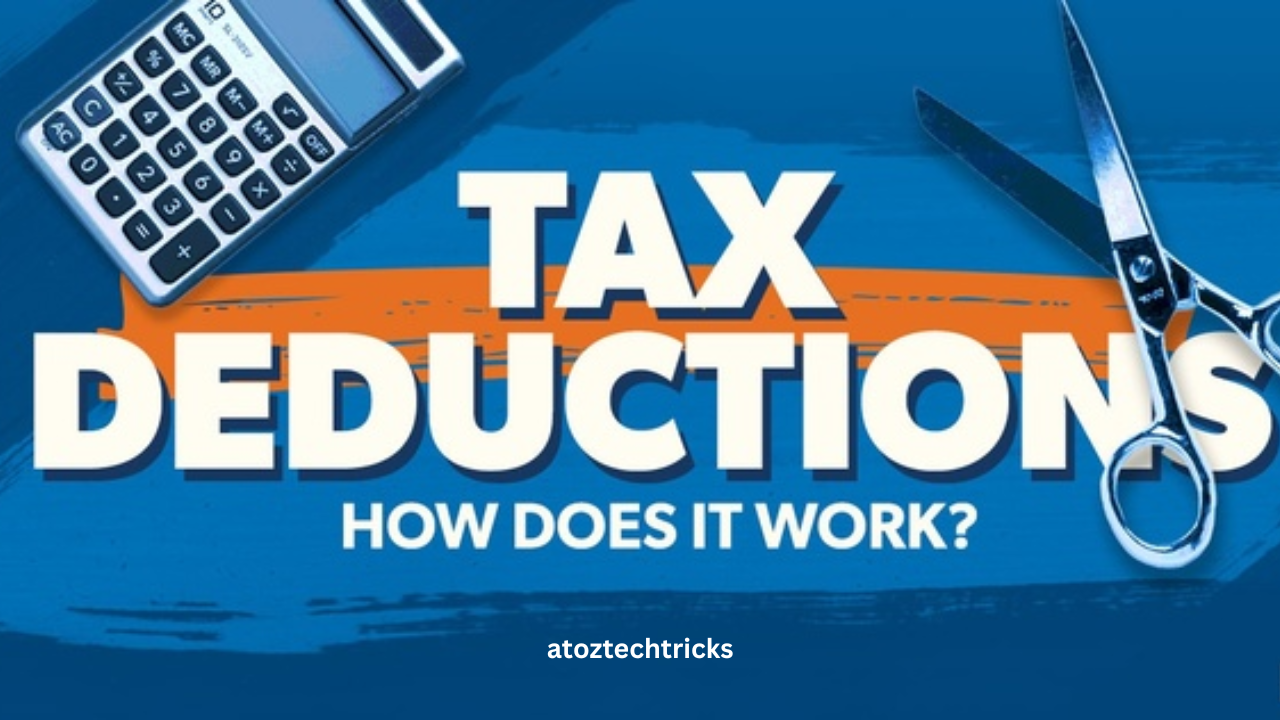Maximizing Tax Deductions and Credits: Strategies for Reducing Your Tax Bill
Navigating the world of taxes can be complex and overwhelming, but understanding how to maximize your tax deductions and credits can significantly reduce your tax bill and potentially increase your refund. This comprehensive guide will walk you through effective strategies for leveraging tax deductions and credits to keep more of your hard-earned money.
Understanding Tax Deductions and Credits
Before diving into strategies, it’s important to differentiate between tax deductions and tax credits:
- Tax Deductions: These reduce your taxable income. For example, if you qualify for a $1,000 deduction and your taxable income is $50,000, your new taxable income is $49,000. The impact of a deduction depends on your tax bracket.
- Tax Credits: These reduce your tax liability directly. For instance, a $1,000 tax credit reduces your tax bill by $1,000, regardless of your income or tax bracket.
Understanding these differences helps in planning your tax strategy effectively.
Maximizing Tax Deductions
1. Itemize Deductions
One way to potentially increase your deductions is by itemizing them on your tax return instead of taking the standard deduction. While the standard deduction simplifies the process, itemizing allows you to deduct specific expenses:
- Mortgage Interest: Deduct interest paid on your primary residence’s mortgage. If you have a second home, you may also deduct mortgage interest for it.
- State and Local Taxes: Deduct state and local income taxes or sales taxes (but not both), including property taxes.
- Medical Expenses: If your medical expenses exceed 7.5% of your adjusted gross income (AGI), you can deduct the amount above this threshold. This includes payments for medical treatments, prescription drugs, and some over-the-counter medications with a doctor’s prescription.
- Charitable Contributions: Donations to qualified charitable organizations are deductible. Keep records of all donations, including cash, goods, and mileage driven for charitable purposes.
- Miscellaneous Deductions: Other potential itemized deductions include unreimbursed employee expenses (for certain professions), tax preparation fees, and investment expenses.

2. Maximize Retirement Contributions
Contributing to retirement accounts not only prepares you for the future but also provides immediate tax benefits. Here’s how:
- 401(k) Contributions: Contributions to a traditional 401(k) are made with pre-tax dollars, reducing your taxable income. For 2024, the contribution limit is $23,000 ($30,000 if you’re 50 or older).
- IRA Contributions: Traditional IRA contributions may also be tax-deductible, depending on your income and whether you or your spouse are covered by a retirement plan at work. For 2024, the contribution limit is $6,500 ($7,500 if you’re 50 or older).
- SEP IRAs: For self-employed individuals, Simplified Employee Pension (SEP) IRAs allow contributions up to 25% of your compensation, with a maximum of $66,000 for 2024.
3. Utilize Health Savings Accounts (HSAs)
If you have a high-deductible health plan (HDHP), contributing to an HSA provides both immediate tax deductions and tax-free growth. For 2024, you can contribute up to $4,150 for individuals and $8,300 for families. Contributions are tax-deductible, and withdrawals used for qualified medical expenses are tax-free.
4. Claim Educational Expenses
The cost of education can be substantial, but tax deductions can help alleviate the burden:
- Student Loan Interest Deduction: You can deduct up to $2,500 in student loan interest paid, subject to income limits.
- Lifetime Learning Credit: This credit provides up to $2,000 per year for qualified education expenses, including tuition and fees, with no limit on the number of years it can be claimed.
5. Deduct Business Expenses
If you’re self-employed or own a business, deducting business-related expenses can significantly lower your taxable income:
- Home Office Deduction: If you use part of your home exclusively for business, you can deduct a portion of your rent, utilities, and other home expenses.
- Travel and Meals: Expenses for business travel, lodging, and 50% of business meals are deductible.
- Equipment and Supplies: Costs for office supplies, equipment, and software can be deducted.
6. Consider Energy-Efficient Home Improvements
Making energy-efficient upgrades to your home can also provide tax benefits:
- Residential Energy Efficient Property Credit: You can claim a credit for 26% of the cost of solar panels, solar water heaters, and other renewable energy sources installed in your home.
Maximizing Tax Credits
1. Earned Income Tax Credit (EITC)
The EITC is a credit for low to moderate-income individuals and families. The amount of the credit depends on your income, filing status, and number of qualifying children. The EITC can be substantial, so make sure to check eligibility requirements and claim it if you qualify.
2. Child Tax Credit
For each qualifying child under 17, you can claim a credit of up to $2,000. This credit phases out for higher income levels, but up to $1,600 of it is refundable, meaning you can receive a refund even if you owe no taxes.
3. American Opportunity Tax Credit (AOTC)
The AOTC provides up to $2,500 per eligible student per year for the first four years of post-secondary education. This credit is partially refundable, allowing you to receive up to $1,000 even if you owe no taxes.
4. Child and Dependent Care Credit
If you pay for childcare or care for a dependent while you work, you may be eligible for a credit ranging from 20% to 35% of your qualifying expenses, up to $3,000 for one child or dependent and $6,000 for two or more.
5. Saver’s Credit
The Saver’s Credit is available to low and moderate-income individuals who contribute to retirement plans such as 401(k)s or IRAs. The credit is worth up to $1,000 ($2,000 if married filing jointly) and is a percentage of your retirement contributions.
6. Adoption Credit
If you adopt a child, you may qualify for a credit of up to $15,000 per child for qualified adoption expenses, including adoption fees, legal costs, and travel expenses.
7. Electric Vehicle Credit
Purchasing a qualifying electric vehicle (EV) may qualify you for a credit of up to $7,500, depending on the vehicle’s battery capacity and other factors.
Strategic Tax Planning
1. Timing of Deductions and Credits
Strategically timing your deductions and credits can impact your tax bill. For example, if you expect your income to increase significantly next year, it might be beneficial to accelerate deductible expenses into the current year or defer income to the next year.
2. Keep Accurate Records
Maintaining detailed and accurate records of all expenses, receipts, and documentation is crucial for maximizing deductions and credits. This practice not only helps in claiming deductions and credits but also is vital if you’re ever audited by the IRS.
3. Use Tax Software or Consult a Professional
Tax software can guide you through the process of claiming deductions and credits, ensuring you don’t miss any opportunities. However, consulting a tax professional can provide personalized advice and strategies based on your specific financial situation.
4. Review and Adjust Withholdings
Reviewing your withholdings and making adjustments as needed can help manage your tax liability throughout the year. Ensuring the correct amount is withheld helps avoid a large tax bill at the end of the year.
5. Take Advantage of Tax-Advantaged Accounts
Using tax-advantaged accounts like HSAs, FSAs (Flexible Spending Accounts), and 529 plans (for education expenses) can provide additional opportunities for tax savings. Contributions to these accounts are often tax-deductible, and withdrawals for qualified expenses are tax-free.
Investing in Real Estate: A Comprehensive Guide to Building Wealth
Common Pitfalls to Avoid
1. Overlooking Small Deductions
Small deductions, when aggregated, can add up. Don’t overlook deductions for items like bank fees, educational supplies, or job search expenses.
2. Failing to Keep Proper Documentation
Without proper documentation, you risk losing out on deductions or credits. Ensure you keep all receipts, records, and statements related to your deductible expenses.
3. Ignoring Changes in Tax Laws
Tax laws frequently change, and staying informed about these changes can impact your strategy. Tax reforms can introduce new deductions or credits or alter existing ones.
4. Neglecting to Review Eligibility Requirements
Each deduction and credit has specific eligibility requirements. Carefully review these to ensure you qualify before claiming them on your tax return.
5. Missing Deadlines
Tax deductions and credits are often subject to deadlines. Ensure you file your tax return on time and meet any deadlines for claiming specific deductions or credits.

Maximizing tax deductions and credits requires careful planning, attention to detail, and staying informed about current tax laws. By itemizing deductions, contributing to retirement accounts, leveraging education and health-related credits, and avoiding common pitfalls, you can effectively reduce your tax bill and optimize your financial situation. Whether you use tax software or consult a professional, taking proactive steps to understand and utilize available tax-saving strategies will help you keep more of your hard-earned money and achieve your financial goals.




Post Comment